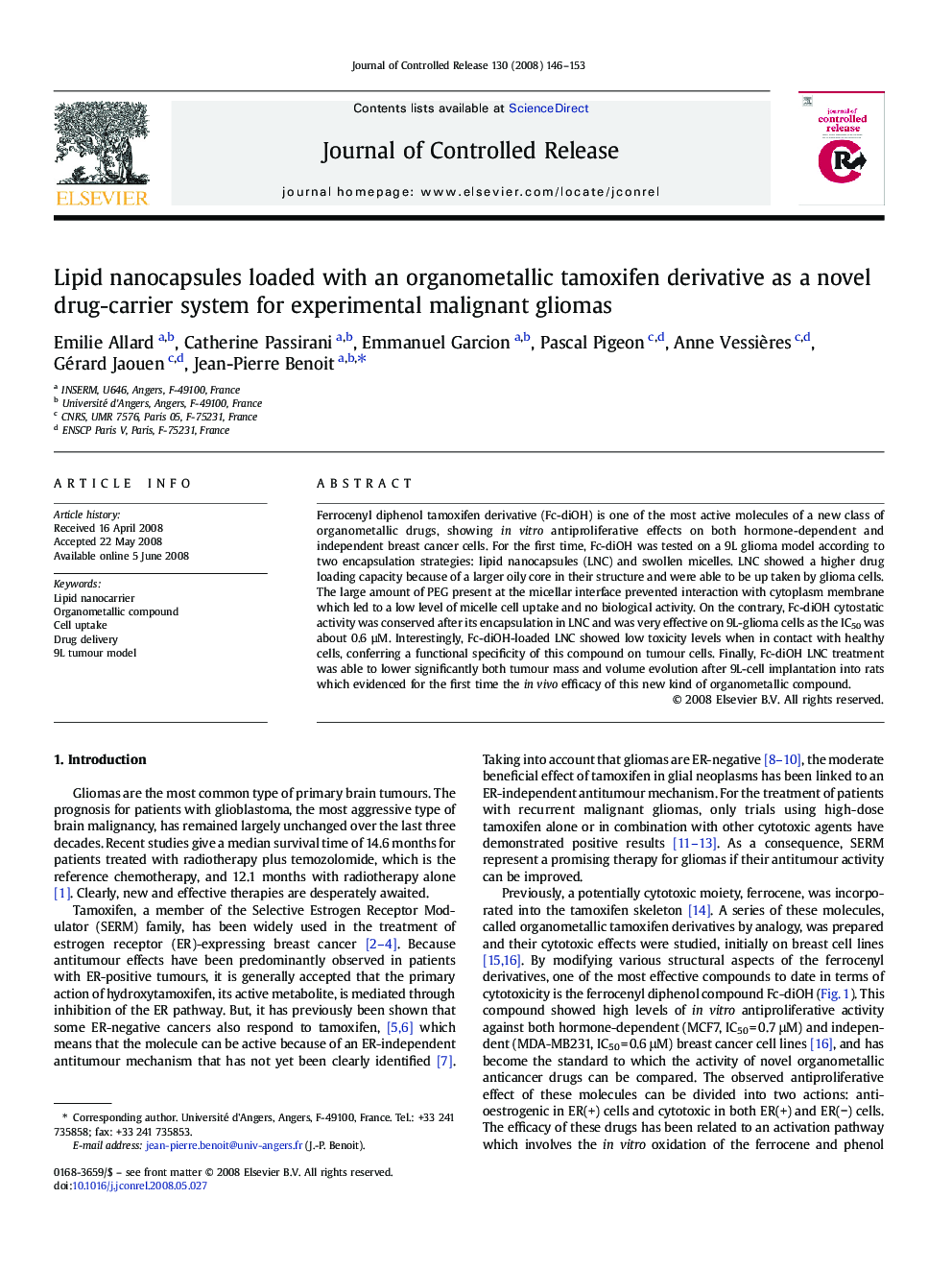| Article ID | Journal | Published Year | Pages | File Type |
|---|---|---|---|---|
| 1426866 | Journal of Controlled Release | 2008 | 8 Pages |
Ferrocenyl diphenol tamoxifen derivative (Fc-diOH) is one of the most active molecules of a new class of organometallic drugs, showing in vitro antiproliferative effects on both hormone-dependent and independent breast cancer cells. For the first time, Fc-diOH was tested on a 9L glioma model according to two encapsulation strategies: lipid nanocapsules (LNC) and swollen micelles. LNC showed a higher drug loading capacity because of a larger oily core in their structure and were able to be up taken by glioma cells. The large amount of PEG present at the micellar interface prevented interaction with cytoplasm membrane which led to a low level of micelle cell uptake and no biological activity. On the contrary, Fc-diOH cytostatic activity was conserved after its encapsulation in LNC and was very effective on 9L-glioma cells as the IC50 was about 0.6 µM. Interestingly, Fc-diOH-loaded LNC showed low toxicity levels when in contact with healthy cells, conferring a functional specificity of this compound on tumour cells. Finally, Fc-diOH LNC treatment was able to lower significantly both tumour mass and volume evolution after 9L-cell implantation into rats which evidenced for the first time the in vivo efficacy of this new kind of organometallic compound.
